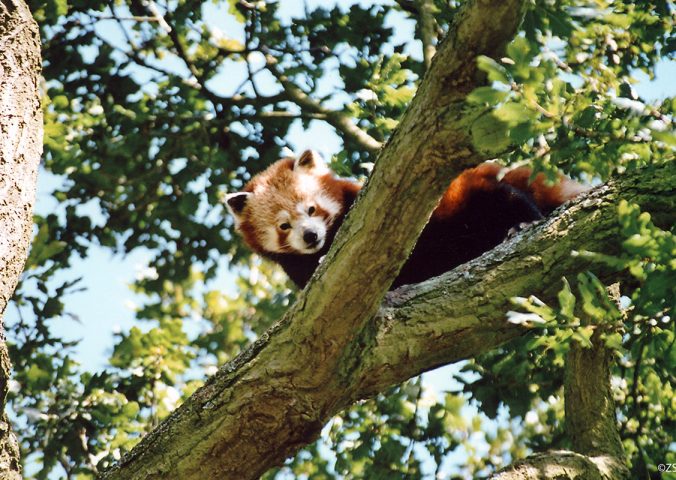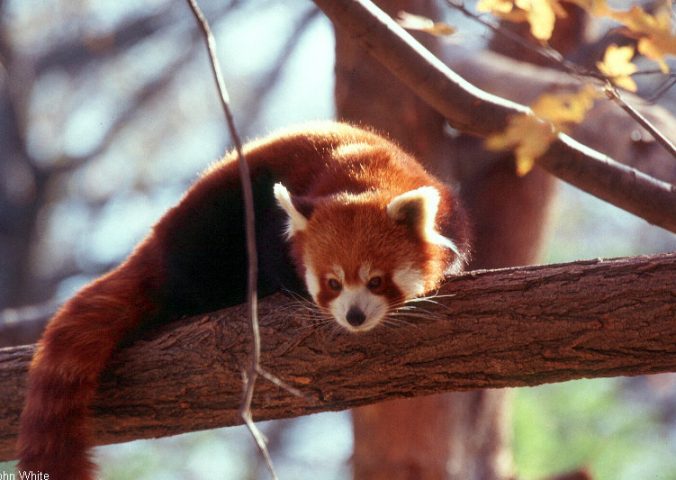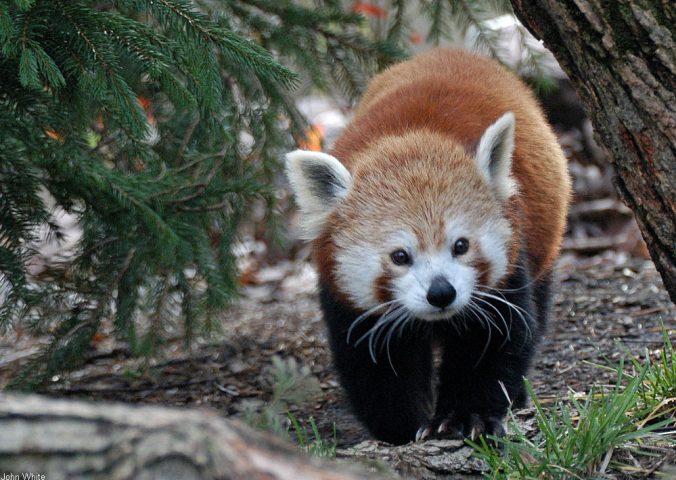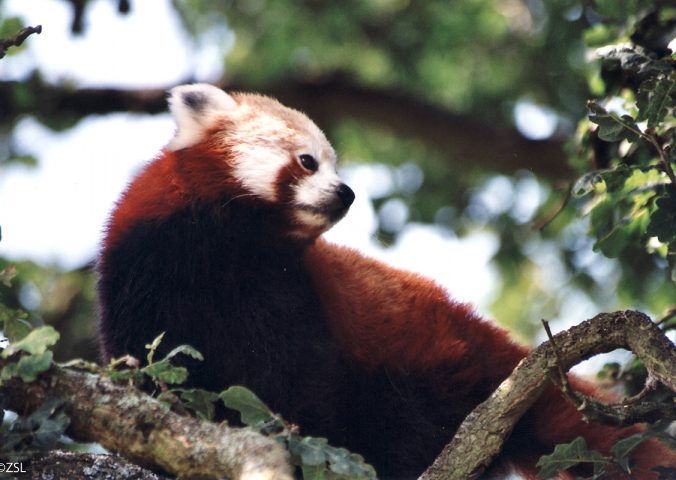About
The scientific name of this rare and beautiful species literally means ‘fire-coloured cat’.
Its striking red fur is thought to help it blend in with the reddish-brown moss that grows on the branches of the trees in which it lives. Like the giant panda, despite not being closely related, the red panda has evolved to feed almost exclusively on bamboo. Individuals must spend a great deal of time eating just to maintain their bodyweight – female red pandas have been known to eat up to 200,000 bamboo leaves in a single day! The red panda represents the only extant members of its family. The red panda are part of the group that contains skunks and raccoons, otters, weasels and badgers, with a significant period of independent evolution separating them from giant pandas. Red pandas are declining throughout their range as a result of deforestation, increased agriculture, hunting and pressure from growing human populations. There are less than 10,000 red pandas in the wild today; scattered throughout south-east Asia.
- Order: Carnivora
- Family: Ailuridae
- Population: <10,000
- Trend: decreasing
- Size: 51-63.5cm
- Weight: 3-6kg
EDGE Score
Distribution
They are found in disjointed populations through south Asia. They are found in Nepal, Bhutan, India, Myanmar, and China.
Habitat and Ecology
They inhabit montane forests, with dense bamboo-thicket understorey. They feed primarily on young leaves and shoots of bamboo. Though it also eats fruits, roots, succulent grasses, acorns, lichens, birds’ eggs and insects.





